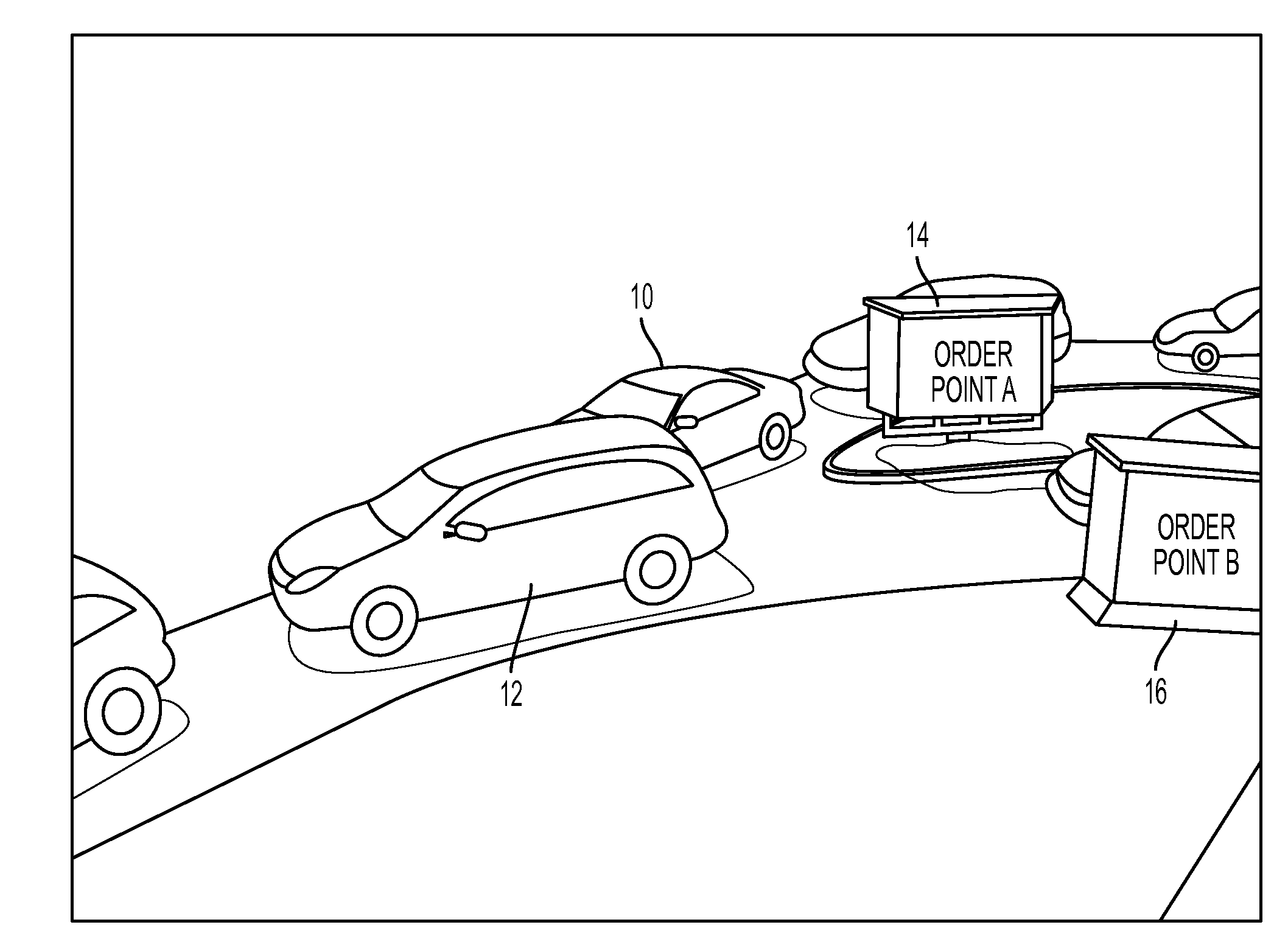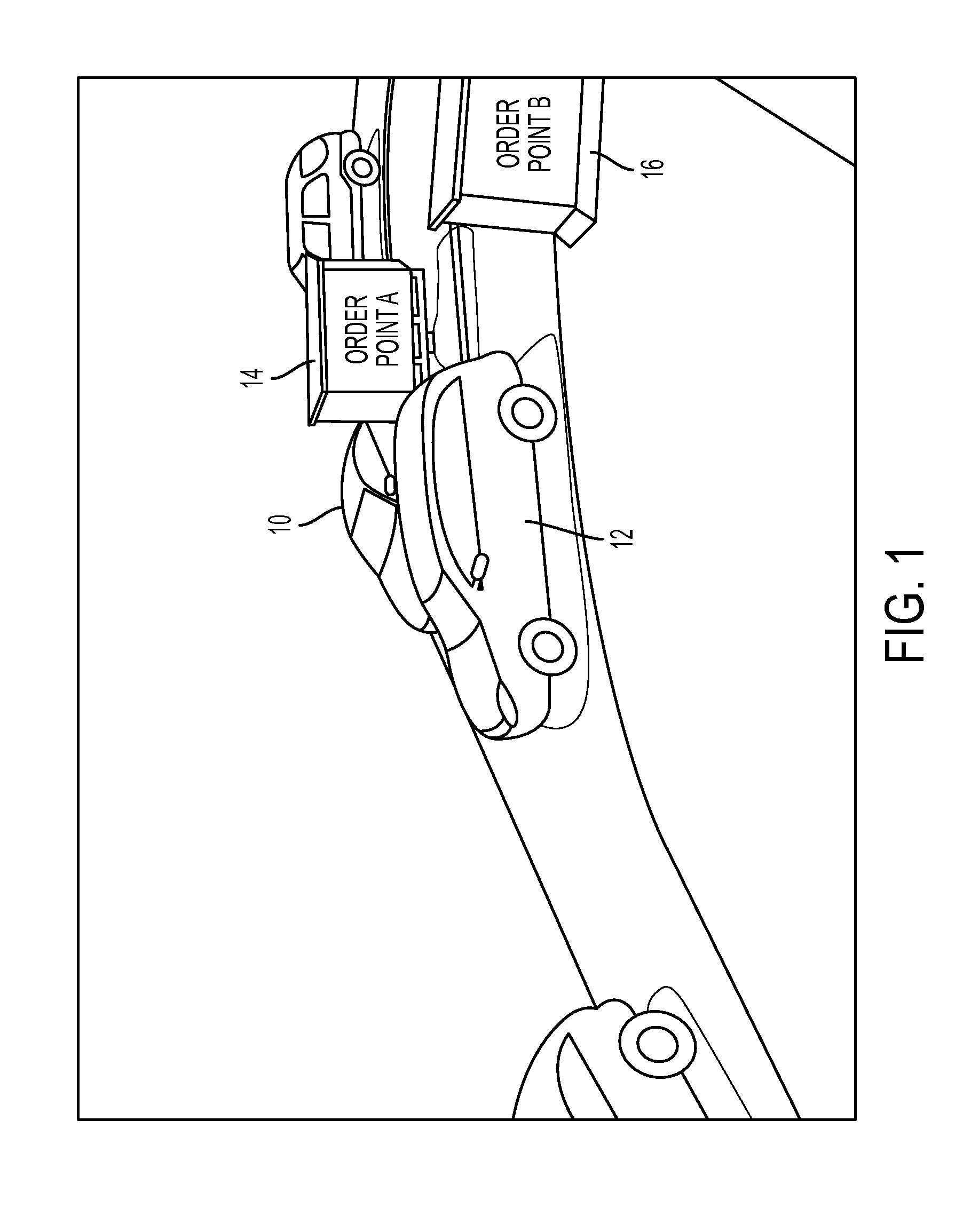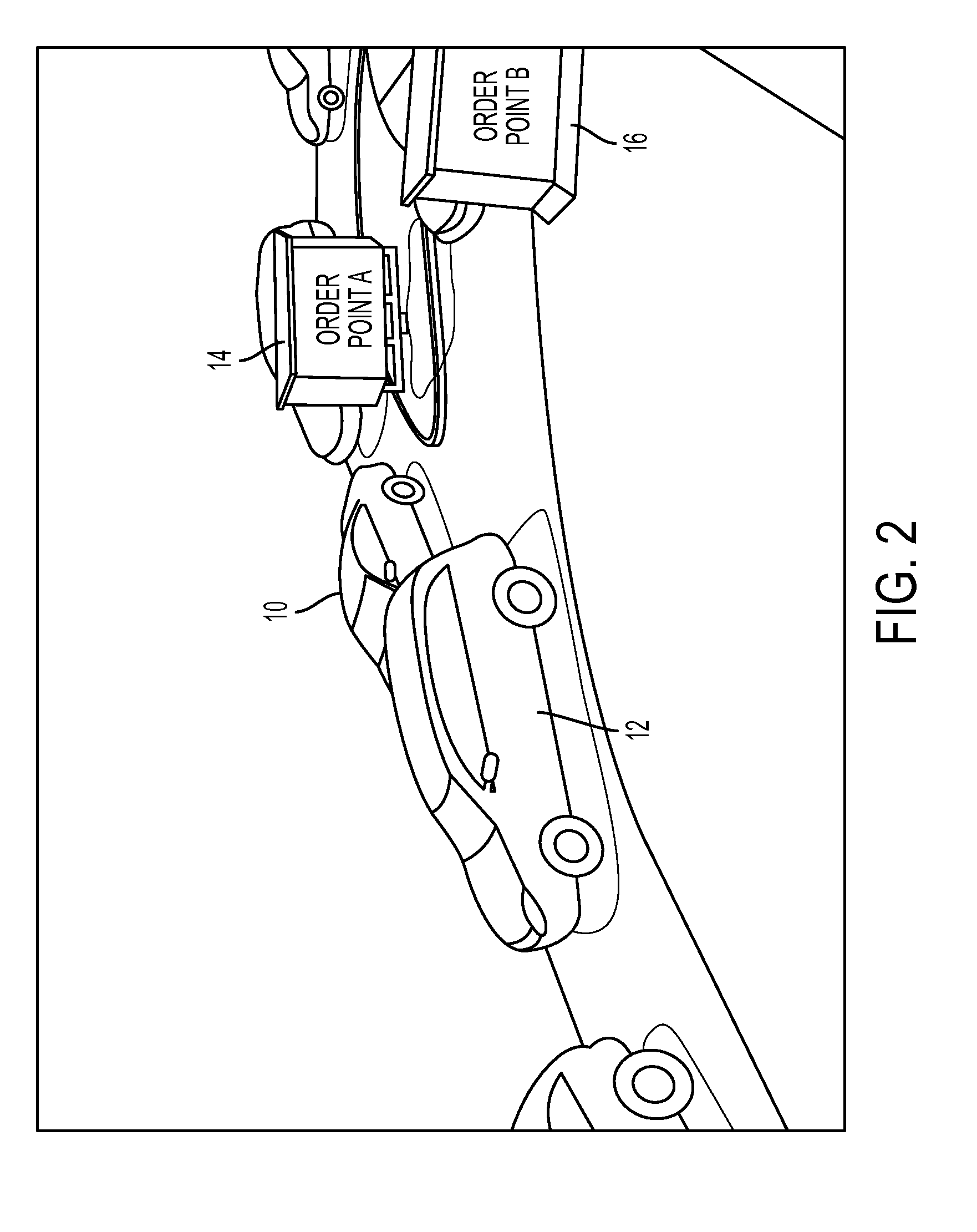Method and system for automated sequencing of vehicles in side-by-side drive-thru configurations via appearance-based classification
a technology of appearance-based classification and automatic sequencing, which is applied in the field of appearance-based classification method and system for automatic sequencing of vehicles in side-by-side drive-thru configurations, can solve the problems of significant customer dissatisfaction, mismatch between, and incorrect prices charged
- Summary
- Abstract
- Description
- Claims
- Application Information
AI Technical Summary
Benefits of technology
Problems solved by technology
Method used
Image
Examples
Embodiment Construction
[0056]This disclosure provides an image or video-based method and system to automate post-merge sequencing that does not rely on tracking vehicles from an order point. An object-tracking-based approach would detect vehicles at the order point and track their location across times (i.e., across frames), and based on the temporal sequence of vehicle locations, make a determination as to which vehicle crosses the merge point first. In contrast, the proposed disclosure operates by detecting vehicles as they cross a merge point and, based on their appearance, classifies the vehicles as originating from an inner or outer lane. The method and system rely on an offline training stage where features of manually labeled samples of vehicles crossing a merge point are extracted and fed into a classifier for training; the trained classifier is subsequently used as an online classifier module during system operation.
[0057]The present disclosure provides an image- or video-based method and system ...
PUM
 Login to View More
Login to View More Abstract
Description
Claims
Application Information
 Login to View More
Login to View More - R&D
- Intellectual Property
- Life Sciences
- Materials
- Tech Scout
- Unparalleled Data Quality
- Higher Quality Content
- 60% Fewer Hallucinations
Browse by: Latest US Patents, China's latest patents, Technical Efficacy Thesaurus, Application Domain, Technology Topic, Popular Technical Reports.
© 2025 PatSnap. All rights reserved.Legal|Privacy policy|Modern Slavery Act Transparency Statement|Sitemap|About US| Contact US: help@patsnap.com



